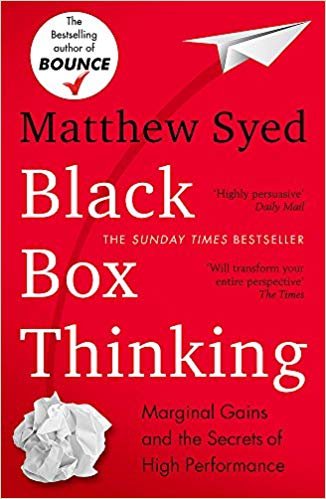Matthew Syed is a former table tennis international and author on factors drives high performance with his books Bounce and Black Box Thinking. He is a consultant on boosting creativity, and identifying marginal gains in order to gain an edge. Both of his books are directly applicable to trading.
Thesis
The book focuses on ‘Black box thinking’ a new approach to high performance and a way of finding an edge in a complex and fast-changing world. It has ramifications for sport, business, politics, regardless of age or gender. The books strips away previous tenets of what makes and defines success, and looks at how it is achieved, and how you can use it to achieve in your own life.
Key Themes
Repetition
One of the main takeaways in this book is that repetition drives success. If we think back to David Beckham’s famous kick in 2002 to send England through to the World Cup against Greece, we see a snapshot of success. What we don’t see is the hours and hours he spent after school practising keepy ups from the age of 6.
At first, Beckham was distinctly average. No better than any other 6 year old boy. He could do a handful before the ball ended up on the ground. But after six months, he could do 50, another six months after he was up to 200. By the time he turned 9 he could do over 2,000, and decided to practise something new!
From then on, David Beckham spent hours in the park kicking a ball, and even as a professional would often stay back after training when the other players had left in order to practice free kicks more. David Beckham wasn’t born a footballing genius, but he did become one through concerted effort and focused repetition.
The cumulative effects of marginal gains
Marginal gains, regardless of how marginal, are all cumulative. Rather than searching for the one change that will turbocharge results, very often marginal increases in each part of the process yields huge gains. In 2009, cycling coach Dave Brailsford, created Team Sky and told the world that they would win a Tour de France within five years. The world laughed (despite his Olympic successes with Team GB), yet in 2012 Team Sky did exactly that. They did it again the following year. Team Sky was able to do this through gaining in every part of cycling, from aerodynamics of bicycle frames, helmets, and clothing, to nutrition, travel, and even sleep.
Randomised control tests can be used to test for optimal performance. To give an example, improving educational outcomes in Africa is used. One way to see if aid spending is working would be to test for a linear correlation between quantity of spending and average grade scores. Two economists carried out a study of giving free textbooks to a group of schools and seeing if grades improved against the ones that did not receive them.
The first test showed that the free textbooks made no difference. However, they were written in English. An obvious fix – except the textbooks in the local language made no difference either. They tried flipcharts, bold graphics, all were a failure.
The economist tried a different approach, and instead tried a randomised control test on de-worming. This time the results were excellent – those who received treatment boosted childrens’ height, reduced re-infection rates, and also reduced absenteeism improving grades! It was a marginal gain, and through more RCTs improvements could be made elsewhere.
The black box
The reason why airlines are so safe is because every plane is equipped with an almost indestructible black box. There is a culture within the airline industry to prevent, and so pilots are empowered to anonymously report incidents so that they can be learned from. Sadly, this process of learning and preventing accidents before they happen is not so prevalent in the medical industry, but those who adopt black box thinking into their trading would benefit from the process. After 9/11, cockpits were made much more difficult to enter, which prevented someone storming the cockpit so easily. Unfortunately, this also meant that Andreas Lubitz was allowed to crash his Lufthansa plane into a mountain and no one could stop him. We cannot prevent every mistake, but we can learn from them and get better.
Conclusion
For a nonfiction book this reads very easily. It is full of interesting stories such as how James Dyson created over 5,000 prototypes before his cyclone vacuum cleaner was good to go, and how black box thinking can reform the judicial system, but taking away the three main points listed is mainly what is useful from the book.

